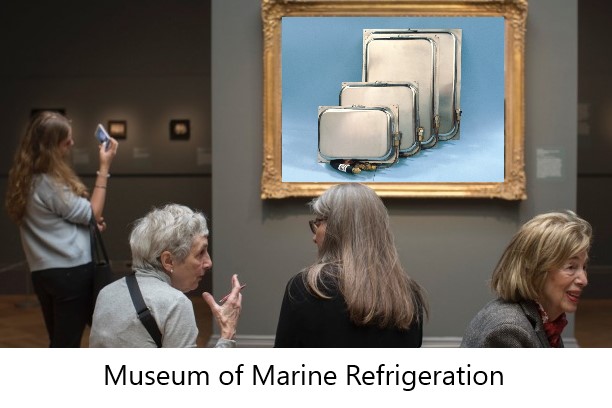Phone: (301) 352-5738
Email: info@CoastalClimateControl.com
Office | Warehouse:
4831 Tesla Dr., Suite H
Bowie, Maryland 20715
Request Information
Click here for directions.
Here's a fact: Heat travels in one direction only; from warm to cold. So if a temperature difference exists between two items, the warmer item will lose heat to the cooler item; so the warmer item gets colder, the colder item gets warmer.
Simply put, when we put warm beers into a cooler of ice, we don't actually cool down the beer as much as warm up the ice! When heat leaves the beer for the ice, the beer gets colder as a result, and soon the contents are all at a wonderfully refreshing 32F temperature. And thanks to the laws of science and beerology, everything will stay that way until all the ice has melted and the beer has been consumed.
And now here's a conundrum: Should you endeavor to keep your fridge and freezer as full as possible in an effort to save power usage?
"Icing Down the Beer" vs "Beering Up the Ice"
Here's a fact: Heat travels in one direction only; from warm to cold. So if a temperature difference exists between two items, the warmer item will lose heat to the cooler item; so the warmer item gets colder, the colder item gets warmer.
Simply put, when we put warm beers into a cooler of ice, we don't actually cool down the beer as much as warm up the ice! When heat leaves the beer for the ice, the beer gets colder as a result, and soon the contents are all at a wonderfully refreshing 32F temperature. And thanks to the laws of science and beerology, everything will stay that way until all the ice has melted and the beer has been consumed.
But what about your refrigerated ice box? Isn't it always being kept cold?
I recently had an air conditioning system replaced at my house. Out went the old energy hog with a noisy, fixed speed compressor, and in came a high efficiency unit with a quiet compressor and fan, both of which run at variable speeds. So, today’s question is: Why does varying the compressor speed increase efficiency, and how is that achieved?
Golden Rule: The longer and slower a compressor can run, the more efficient it will beEfficiency in refrigeration and air conditioning systems is measured as a ratio of power out to power in, and can be in several forms. The Energy Efficiency Ratio (EER) is the ratio of output cooling energy in Btu’s to input electrical energy in watts under certain fixed conditions. So a system with an EER rating of 10 will produce 10 Btu’s of cooling for every watt of power consumed under the specified conditions. The Seasonal Energy Efficiency Ratio (SEER) that is used in commercial and residential equipment is similar to the EER, but is assessed over time and under varying conditions.
When a fixed speed compressor is operating under light-load conditions, i.e. nighttime, cool weather, etc., a fixed-speed compressor will be running for short spurts and do a lot of cooling in a hurry, which is inherently very inefficient. If we were to be able to slow the compressor down during periods of light load, the system would run longer and be more efficient overall, but would still have the required capacity available for high heat-load conditions.
Unless other actions are also taken, using a vacuum pump to evacuate a R134a refrigeration system will almost certainly not result in a permanent resolution to particle or moisture blockages. This is true no matter how deep the vacuum or for how long the vacuum pump is run.Moisture issues - Back in the day, when refrigeration systems used good old ozone-gulping refrigerant R12 and mineral oil in the compressor, moisture could be removed from the entire system, including the oil, simply by hooking up a vacuum pump and taking the system down into a pretty deep vacuum. Any moisture would evaporate out of the oil at this low pressure, and find its way out of the system as a vapor via the vacuum pump. Skip forward to the present day, and we now use more environmentally friendly refrigerants such as R134a which requires a synthetic oil for the compressor.The Danfoss/Secop BD 35 and BD 50 compressors are supplied filled with a polyolester (POE) oil, which is extremely hygroscopic i.e. it will grab hold of any passing spec of moisture and won't let it go easily. In fact, the oil forms a molecular bond with the moisture, and no matter how deep a vacuum is applied, or for how long, those pesky moisture molecules will remain trapped in the oil unless another element is brought into play, and that element is heat.
Frigoboat's Keel Cooler, installed on over 40,000 vessels worldwide, offers water-cooled heat exchan
(as found in Section 6 of the Frigoboat manual) The F-type flat evaporators may be carefully bent on






